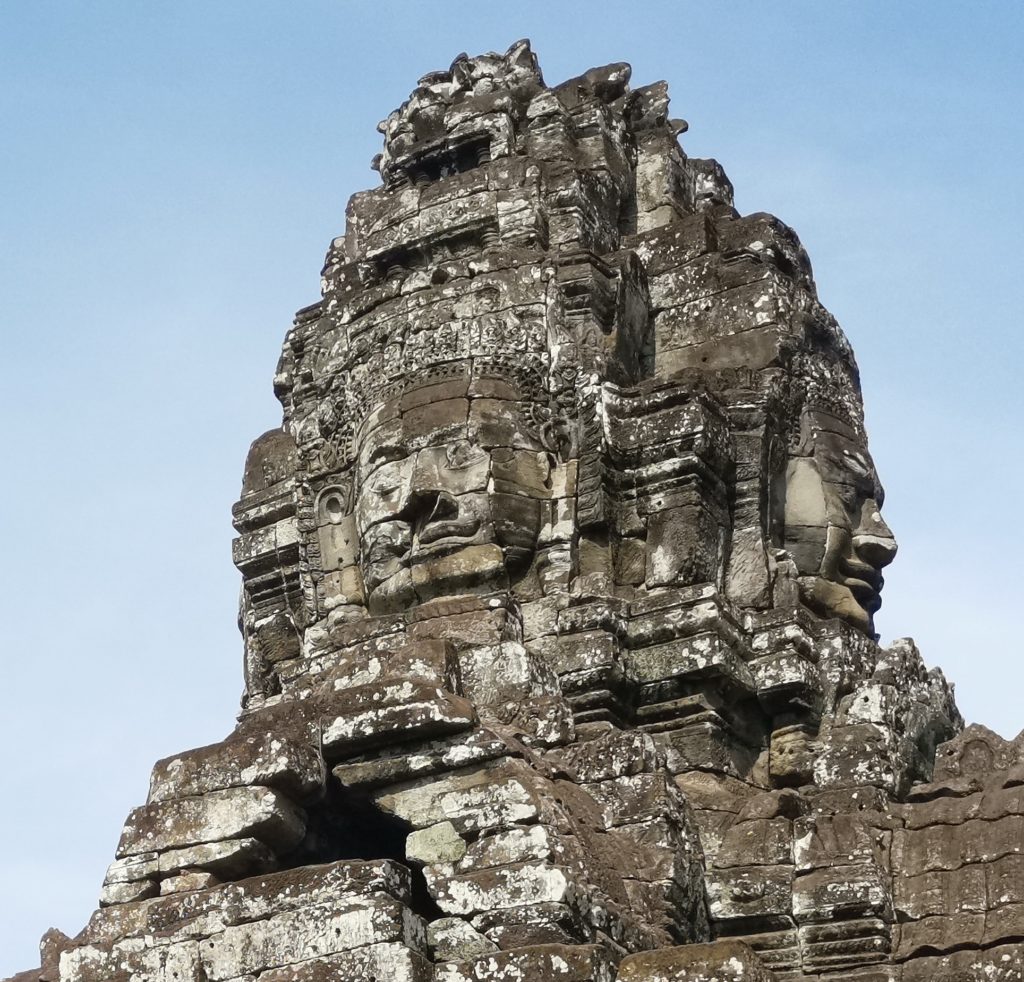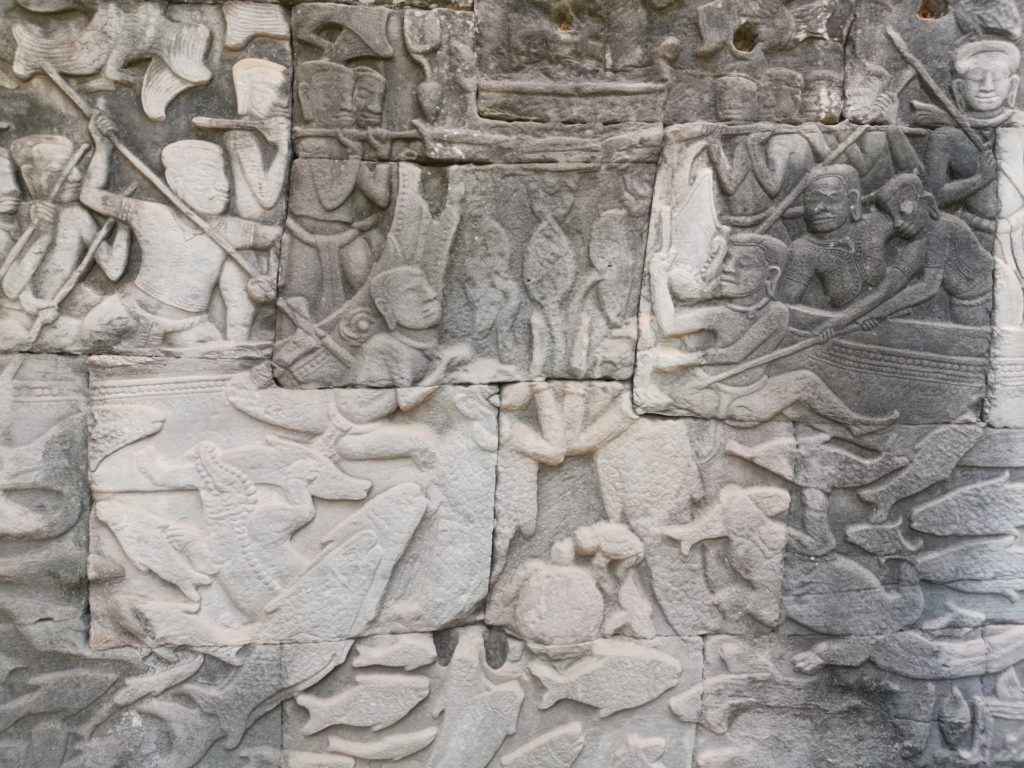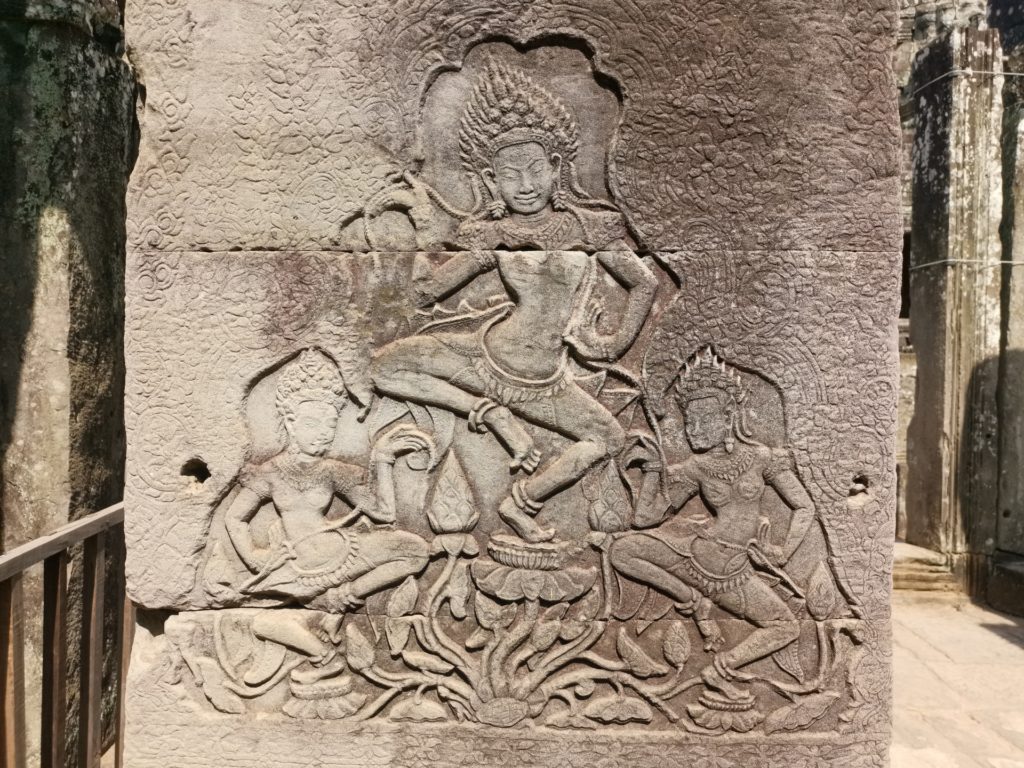Bayon – The famous faces of Angkor
The Prasat Bayon was built during the reign of King Jayavarman VII at the turn of the 12th/13th century and is considered one of the most breathtaking temples in the Angkor region. The temple is located right in the center of the city of Angkor Thom and has been a UNESCO World Heritage Site since 1992. The temple is best known for its meter-high smiling faces, which were carved out of stone and probably bear a resemblance to the king who was deified as a ruler at the time. The faces were placed on 49 towers (or so it is commonly believed, although the numbers vary a bit in some cases), of which 37 remain today.

Some of the famous faces in the Bayon temple
Accordingly, what is special about the temple complex is not necessarily its architectural workings, but rather the numerous reliefs that have clearly captured scenes of Hindu mythology, everyday scenes and acts of war of the time, providing historians with a deep insight into the events, as well as the cultural narratives of the time. It is particularly valuable that not only the life of the king was documented here, but also the work of the ordinary people: a significant advantage, since all written documentation of the Khmer Empire comes from visitors, who accordingly could only capture an “outside view”.

Battle scene on the water from a relief in the Bayon Temple
In the middle of the temple is the main tower, which is surrounded by other towers. The arrangement within the complex is reminiscent of a labyrinth and can be quite confusing for visitors: The reason for this is that the Bayon has been repeatedly rebuilt or expanded.
The central sanctuary of the temple (which, unusually for that time, is not square but round) is dedicated to Buddha, as King Jayavarman VII was himself a Buddhist and established the Bayon as a state temple. He was also the one who had numerous Buddhist buildings erected throughout the region, which, however, also contain Hindu representations time and again. He is considered the most “productive” ruler of the Khmer Empire in terms of the number of temples built.

Dancing Apsaras at Bayon Temple
Visitors should plan about three to four hours for the trip to the Bayon, in order to be able to really visit the area, to admire the numerous reliefs and to dive into the history of the Khmer. Especially in the morning or in the early afternoon, the best light is available to be able to recognize the representations as well as possible. Since the temple is very popular with tourists, visitors should be prepared for the fact that it may well come to a larger crowd at peak times: Quiet moments are probably rare here.
The Bayon has been continuously restored since the 1980s and is accordingly in a reasonably good condition.